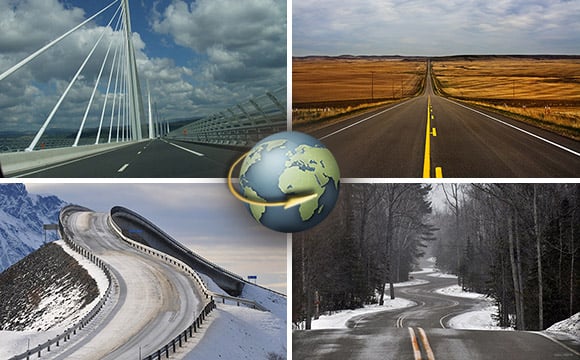
Introduction:
Driving experiences vary widely depending on the setting. This article examines the contrasts between urban and rural driving, exploring differences in pace, road conditions, and overall stress levels. Whether navigating busy city streets or meandering country lanes, each environment presents its own unique challenges. Understanding these differences helps drivers prepare and adjust their strategies accordingly.
City Driving Challenges:
Urban environments are often characterized by congested traffic, complex intersections, and a constant flow of vehicles. Navigating these challenges demands heightened concentration and rapid decision-making. Drivers must contend with frequent stops, pedestrian crossings, and unexpected detours. These challenges require a steady focus and readiness to adapt to rapidly changing conditions in order to maintain safety.
Traffic Complexity:
City streets present intricate traffic patterns with multiple lanes and heavy congestion during peak hours. Navigating these situations can be stressful, as drivers must constantly monitor other vehicles and potential hazards. The complexity of urban traffic requires a well-practiced sense of awareness and the ability to predict sudden movements. This dynamic environment often calls for a careful, deliberate driving style.
Pedestrian Awareness:
Urban areas are vibrant with pedestrian activity. The presence of foot traffic in residential and commercial zones demands constant vigilance. Drivers need to anticipate unexpected crossings and exercise extra caution near schools or public spaces. This ongoing awareness is essential for ensuring that both drivers and pedestrians remain safe in busy, populated areas.
Navigation Demands:
In metropolitan settings, navigation can be a complex task due to the density of road networks. Drivers often rely on digital maps and real-time updates to guide them through the urban maze. Despite modern aids, the cognitive load remains high. Adjusting routes on the fly and coping with detours require flexibility and calm under pressure, hallmarks of experienced city driving.
Rural Roadways:
In contrast, rural driving typically offers open roads and less congestion. The spaciousness and quieter surroundings contribute to a relaxed driving atmosphere. However, rural routes may present challenges such as poorly maintained surfaces or unexpected wildlife. Drivers must be prepared for a different set of hazards, requiring a balanced approach between calm observation and cautious maneuvering.
Scenic Routes:
One of the benefits of rural driving is the opportunity to enjoy scenic views and a slower pace. The natural environment often encourages a mindful pace that fosters relaxation. While the pace may be slower, attention to road conditions remains essential. The beauty of the countryside can provide a welcome distraction from the monotony of urban congestion.

Road Conditions:
Road conditions differ notably between urban and rural settings. In cities, roads are frequently well maintained but subject to high wear from constant use. Conversely, rural roads might be less polished and more prone to unexpected obstacles. These differences require drivers to adjust their expectations and techniques, tailoring their approach to the specific demands of the road.
Vehicle Control:
Urban driving demands precision in vehicle control due to the need for quick reactions and careful navigation in tight spaces. In rural settings, while control remains important, drivers often have more space to maneuver. The differences in control requirements call for an adaptive driving style that matches the environment. Recognizing these nuances can improve both safety and comfort on the road.
Environmental Factors:
Weather and lighting conditions play a significant role in both settings. Urban areas may experience pollution and glare from tall buildings, while rural areas might encounter unlit roads and variable terrain. Adjusting to these factors is part of the overall challenge. Awareness and preparedness for environmental influences help drivers maintain control, regardless of their surroundings.
Conclusion:
Urban and rural driving each come with distinct advantages and challenges. By understanding the differences—from traffic density and navigation demands to road conditions and environmental factors—drivers can better tailor their habits. Adapting to the specific conditions not only improves safety but also enhances the overall driving experience in both busy cities and open country roads.

 The Psychology Behind Solo Driving: What You Need to Know
The Psychology Behind Solo Driving: What You Need to Know Innovative Techniques for Enhancing Road Safety
Innovative Techniques for Enhancing Road Safety Overcoming Driver Fatigue: Tips and Tricks
Overcoming Driver Fatigue: Tips and Tricks Sustainable Driving: How to Lower Your Vehicle's Carbon Footprint
Sustainable Driving: How to Lower Your Vehicle's Carbon Footprint Navigating Different Driving Environments: A Comprehensive Guide
Navigating Different Driving Environments: A Comprehensive Guide
Reviews
Barbara Lewis
I appreciate the focus on reducing the carbon footprint.
Michael Brown
I appreciate the focus on both efficiency and safety.